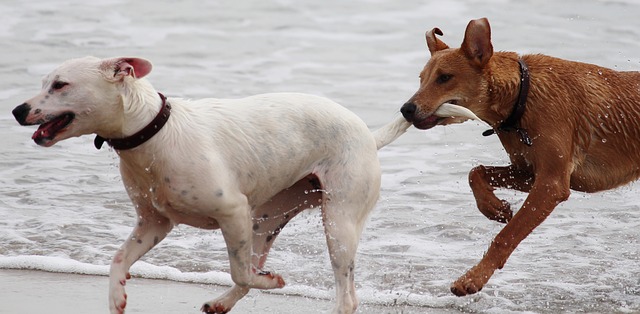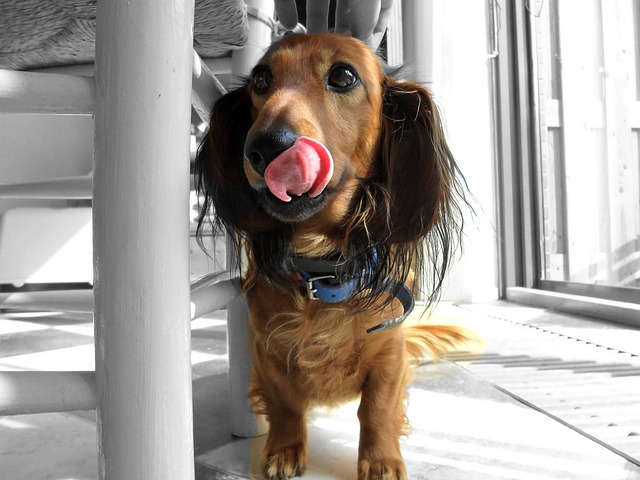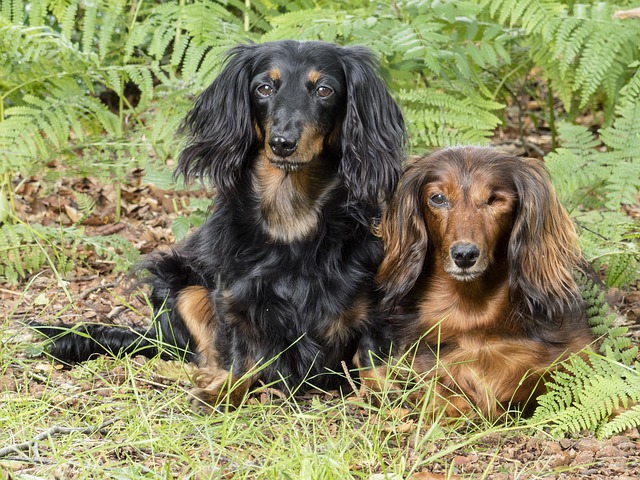Part of the pleasure of owning a dog is the long walks you can regularly take together. This can sometimes be marred, however, by any aggressive behaviour inherent in your dog. A dogfight can be quite scary and even dangerous and although most dogs tend to just bark at each other, these are situations that must be avoided.
The major reason that this happens, says Dr. Ian Dunbar, founder of the Association of Professional Dog Trainers (APDT), is that during their puppyhood, dogs are often deprived of adequate socialisation with other good-natured dogs. As a result, many puppies grow up with poor social skills, and are unable to “read” other dogs and exchange subtle communication signals with them.
Once again, we're back to understanding that dogs are naturally pack animals and many of their skills and social behaviour patterns are learnt from the rest of the pack. They have a hierarchy and social standing and their ability to understand each other’s body language and sounds are all gained within this pack. Once we, as humans, adopt or purchase a puppy, we're conditioning it in a totally different way than it would naturally be used to. With proper training, this can still be healthy and good for the animal but one of the essential things we deprive the pet from is the ability to be able to understand what other dogs mean when near them.

We can overcome this by allowing the dog to have playmates. Not only is this a pleasure for the owners, because they have company, but the dogs learn a lot from each other. Start this way of life early, as any aggressive tendencies that arise from isolation from other dogs nearly always grows more intense as a dog gets older.
How to improve behaviour
If you already have a dog with these problems, or have recently adopted an older dog that shows these tendencies, then there are things you can do about it. It would be unfair to expect complete transformations overnight and with an older dog you may find that it's always uncomfortable in the presence of others. With care and love, a lot can be done to make the walk in the park a more pleasurable experience for the both of you.
What is important is that the emotions that lie beneath the surface of the dog’s psyche is changed and not just the outward behaviour being suppressed, because these are two totally different things. Allowing the dog to understand that rewards in the form of treats happen when he is less aggressive is one way of slowly altering the dog’s way of thinking.
Once it was thought to be OK to yank back on a lead to stop a dog lunging forward in a hostile manner. Although this may stop the dog in its tracks momentarily, it will not repair the underlying damage or feelings of aggression. Being aggressive teaches the animal nothing and their behaviour will just continue the next time the situation arises. All this does is teach the animal to suppress its aggression and this can lead to a sudden outburst at an unexpected moment.

Many experts now believe that all punishment and reprimands must be removed from any training programmes to avoid emotional suppressions.
Many modern dog training programmes include elements such as desensitisation, where other animals are introduced at what is seen as very safe distances and the dogs are constantly rewarded for not showing signs of aggression. This essentially has the visualisation of other dogs mixed with pleasant things.
When the basic commands are taught first, they become the foundation blocks for this further, more intensive training, and so when a dog is told to sit when it sees another dog, it begins to associate the rewards it gets with seeing other animals. The success of these modern day programmes is very good, but of course will vary from animal to animal, depending on their own background. The emphasis today is very much on repetitive commands that are justified by rewards, and even aggressive behaviour can be slowly whittled away by these programmes.
We must also remember that some aggression actually comes from being scared. Again, we can reflect on this behaviour as the animal not fully understanding the body language of other dogs. Certain behaviour programmes emphasise that the owner's own behaviour can also affect the dogs. If we're fearful or aggressive, the dog feeds off it, and although there are situations where it would be hard to change how we feel, it's always best if we can appear happy and relaxed to our dogs. Certainly always do this in the presence of other dogs, as it helps install a positive balance in your own pet, because you must remember your dog sees you as the leader of its pack, so your behaviour does count.


 Shopping Cart
Shopping Cart Rope gundog lead with leather stop
Rope gundog lead with leather stop Rope gundog lead with rubber stop
Rope gundog lead with rubber stop Rope Dog Slip Lead (no stopper)
Rope Dog Slip Lead (no stopper) Rope Slip Lead with Swivel
Rope Slip Lead with Swivel Rope slip/clip lead
Rope slip/clip lead Braided Slip Lead - with a choice of stoppers
Braided Slip Lead - with a choice of stoppers Braided Figure of 8 Slip Lead
Braided Figure of 8 Slip Lead Braided slip lead with swivel
Braided slip lead with swivel Braid slip/clip lead
Braid slip/clip lead Rope double stop slip lead
Rope double stop slip lead Braid double stop slip lead
Braid double stop slip lead 6mm Diameter Rope Slip Lead With Toggle Stop 1.5M Length
6mm Diameter Rope Slip Lead With Toggle Stop 1.5M Length Rope dog clip lead with ring
Rope dog clip lead with ring Rope hand loop lead with clip
Rope hand loop lead with clip Braided Lead with Clip and Ring
Braided Lead with Clip and Ring Braided Hand Loop Lead
Braided Hand Loop Lead Rope Dog Clip Lead with Two Handles
Rope Dog Clip Lead with Two Handles Rope Brace Clip Lead with Swivel
Rope Brace Clip Lead with Swivel Rope brace clip lead
Rope brace clip lead Rope brace slip lead with swivel
Rope brace slip lead with swivel Rope brace slip collar
Rope brace slip collar Braid Brace Clip Lead with Swivel
Braid Brace Clip Lead with Swivel Braid Brace Clip Lead
Braid Brace Clip Lead Braided Brace Slip Lead With Swivel
Braided Brace Slip Lead With Swivel Braided brace slip collar
Braided brace slip collar Rope Couples (with clips)
Rope Couples (with clips) Braided couples (with clips)
Braided couples (with clips) Rope triple branch (with clips)
Rope triple branch (with clips) Braid Triple Branch (with clips)
Braid Triple Branch (with clips) Rope dog slip collar with sliding leather stopper
Rope dog slip collar with sliding leather stopper Rope dog slip collar with sliding rubber stopper
Rope dog slip collar with sliding rubber stopper Rope Dog Slip Collar
Rope Dog Slip Collar Braided slip collar with sliding leather stopper
Braided slip collar with sliding leather stopper Braided slip collar with sliding rubber stopper
Braided slip collar with sliding rubber stopper Braided Slip Collar
Braided Slip Collar Over Shoulder Rope Clip Lead
Over Shoulder Rope Clip Lead Braided Over-the-Shoulder Clip Lead
Braided Over-the-Shoulder Clip Lead Rope hunting slip lead
Rope hunting slip lead Braided Hunting Lead
Braided Hunting Lead Double ended rope clip lead
Double ended rope clip lead Double ended braid clip lead
Double ended braid clip lead Rope dog show lead with centre pull collar
Rope dog show lead with centre pull collar Braided Show Lead with centre pull collar
Braided Show Lead with centre pull collar Rope Slip Head Collar Lead (Slip Halter)
Rope Slip Head Collar Lead (Slip Halter) Braided Slip Head Collar Lead (Slip Halter)
Braided Slip Head Collar Lead (Slip Halter) Traditional Whistle Lanyard
Traditional Whistle Lanyard Traditional whistle lanyards with 2 clips
Traditional whistle lanyards with 2 clips Wading Staff Lanyard
Wading Staff Lanyard Knife Lanyard (Knife not included)
Knife Lanyard (Knife not included) Knot Ball
Knot Ball Ball on a rope
Ball on a rope Dog Soap
Dog Soap